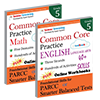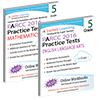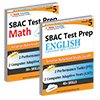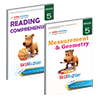|
Supporting Statements RL.5.1
Domain: Reading: Literature
Theme: Key Ideas and Details
Standard: Quote accurately from a text when explaining what the text says explicitly and when drawing inferences from the text.
|
Drawing Inferences RL.5.1
Domain: Reading: Literature
Theme: Key Ideas and Details
Standard: Quote accurately from a text when explaining what the text says explicitly and when drawing inferences from the text.
|
|
Domain: Reading: Literature
Theme: Key Ideas and Details
Standard: Determine a theme of a story, drama, or poem from details in the text, including how characters in a story or drama respond to challenges or how the speaker in a poem reflects upon a topic; summarize the text.
|
|
Domain: Reading: Literature
Theme: Key Ideas and Details
Standard: Determine a theme of a story, drama, or poem from details in the text, including how characters in a story or drama respond to challenges or how the speaker in a poem reflects upon a topic; summarize the text.
|
Summarizing Texts RL.5.2
Domain: Reading: Literature
Theme: Key Ideas and Details
Standard: Determine a theme of a story, drama, or poem from details in the text, including how characters in a story or drama respond to challenges or how the speaker in a poem reflects upon a topic; summarize the text.
|
|
Domain: Reading: Literature
Theme: Key Ideas and Details
Standard: Compare and contrast two or more characters, settings, or events in a story or drama, drawing on specific details in the text (e.g., how characters interact).
|
| Setting RL.5.3
Domain: Reading: Literature
Theme: Key Ideas and Details
Standard: Compare and contrast two or more characters, settings, or events in a story or drama, drawing on specific details in the text (e.g., how characters interact).
|
Figurative Language RL.5.4
Domain: Reading: Literature
Theme: Craft and Structure
Standard: Determine the meaning of words and phrases as they are used in a text, including figurative language such as metaphors and similes.
|
Structures of Texts RL.5.5
Domain: Reading: Literature
Theme: Craft and Structure
Standard: Explain how a series of chapters, scenes, or stanzas fits together to provide the overall structure of a particular story, drama, or poem.
|
Styles of Narration RL.5.6
Domain: Reading: Literature
Theme: Craft and Structure
Standard: Describe how a narrator
|
Visual Elements RL.5.7
Domain: Reading: Literature
Theme: Integration of Knowledge and Ideas
Standard: Analyze how visual and multimedia elements contribute to the meaning, tone, or beauty of a text (e.g., graphic novel; multimedia presentation of fiction, folktale, myth, poem).
|
Compare and Contrast RL.5.9
Domain: Reading: Literature
Theme: Integration of Knowledge and Ideas
Standard: Compare and contrast stories in the same genre (e.g., mysteries and adventure stories) on their approaches to similar themes and topics.
|
Main Idea and Supporting Details RI.5.2
Domain: Reading: Informational Text
Theme: Key Ideas and Details
Standard: Determine two or more main ideas of a text and explain how they are supported by key details; summarize the text.
|
General Academic Vocabulary RI.5.4
Domain: Reading: Informational Text
Theme: Craft and Structure
Standard: Determine the meaning of general academic and domain-specific words and phrases in a text relevant to a grade 5 topic or subject area.
|
Text Structure RI.5.5
Domain: Reading: Informational Text
Theme: Craft and Structure
Standard: Compare and contrast the overall structure (e.g., chronology, comparison, cause/effect, problem/solution) of events, ideas, concepts, or information in two or more texts.
|
Locating Answers RI.5.7
Domain: Reading: Informational Text
Theme: Integration of Knowledge and Ideas
Standard: Draw on information from multiple print or digital sources, demonstrating the ability to locate an answer to a question quickly or to solve a problem efficiently.
|
Using Evidence to Support Claims RI.5.8
Domain: Reading: Informational Text
Theme: Integration of Knowledge and Ideas
Standard: Explain how an author uses reasons and evidence to support particular points in a text, identifying which reasons and evidence support which point(s).
|
Introducing and Closing Topics W.5.1a
Domain: Writing
Theme: Text Types and Purposes
Standard: Introduce a topic or text clearly, state an opinion, and create an organizational structure in which ideas are logically grouped to support the writer
|
Supporting Facts and Details W.5.1b
Domain: Writing
Theme: Text Types and Purposes
Standard: Provide logically ordered reasons that are supported by facts and details.
|
Transitional Words and Phrases W.5.1c
Domain: Writing
Theme: Text Types and Purposes
Standard: Link opinion and reasons using words, phrases, and clauses (e.g., consequently, specifically).
|
Headings and Illustrations W.5.2a
Domain: Writing
Theme: Text Types and Purposes
Standard: Introduce a topic clearly, provide a general observation and focus, and group related information logically; include formatting (e.g., headings), illustrations, and multimedia when useful to aiding comprehension.
|
Importance of Precise Language W.5.3d
Domain: Writing
Theme: Text Types and Purposes
Standard: Use concrete words and phrases and sensory details to convey experiences and events precisely.
|
Understanding Purpose and Audience W.5.4
Domain: Writing
Theme: Production and Distribution of Writing
Standard: Produce clear and coherent writing in which the development and organization are appropriate to task, purpose, and audience. (Grade-specific expectations for writing types are defined in standards 1
|
Plan for Writing W.5.5
Domain: Writing
Theme: Production and Distribution of Writing
Standard: With guidance and support from peers and adults, develop and strengthen writing as needed by planning, revising, editing, rewriting, or trying a new approach.(Editing for conventions should demonstrate command of Language standards 1
|
Revise Writing W.5.5
Domain: Writing
Theme: Production and Distribution of Writing
Standard: With guidance and support from peers and adults, develop and strengthen writing as needed by planning, revising, editing, rewriting, or trying a new approach.(Editing for conventions should demonstrate command of Language standards 1
|
Edit Writing W.5.5
Domain: Writing
Theme: Production and Distribution of Writing
Standard: With guidance and support from peers and adults, develop and strengthen writing as needed by planning, revising, editing, rewriting, or trying a new approach.(Editing for conventions should demonstrate command of Language standards 1
|
Researching and Gathering Information W.5.8
Domain: Writing
Theme: Research to Build and Present Knowledge
Standard: Recall relevant information from experiences or gather relevant information from print and digital sources; summarize or paraphrase information in notes and finished work, and provide a list of sources.
|
Note Taking W.5.8
Domain: Writing
Theme: Research to Build and Present Knowledge
Standard: Recall relevant information from experiences or gather relevant information from print and digital sources; summarize or paraphrase information in notes and finished work, and provide a list of sources.
|
Bibliographies and Citing Sources W.5.9
Domain: Writing
Theme: Research to Build and Present Knowledge
Standard: Draw evidence from literary or informational texts to support analysis, reflection, and research.
|
Subject-Verb Agreement L.5.1c
Domain: Language
Theme: Conventions of Standard English
Standard: Use verb tense to convey various times, sequences, states, and conditions.
|
Pronoun-Antecedent Agreement L.5.1
Domain: Language
Theme: Conventions of Standard English
Standard: Demonstrate command of the conventions of standard English grammar and usage when writing or speaking.
|
Adjectives and Adverbs L.5.1d
Domain: Language
Theme: Conventions of Standard English
Standard: Recognize and correct inappropriate shifts in verb tense.*
|
Conjunctions and Interjections L.5.1e
Domain: Language
Theme: Conventions of Standard English
Standard: Use correlative conjunctions (e.g., either/or, neither/nor).
|
Prepositional Phrases L.5.1a
Domain: Language
Theme: Conventions of Standard English
Standard: Explain the function of conjunctions, prepositions, and interjections in general and their function in particular sentences.
|
|
Domain: Language
Theme: Conventions of Standard English
Standard: Form and use the perfect (e.g., I had walked; I have walked; I will have walked) verb tenses.
|
Capitalization L.5.2
Domain: Language
Theme: Conventions of Standard English
Standard: Demonstrate command of the conventions of standard English capitalization, punctuation, and spelling when writing.
|
|
Domain: Language
Theme: Conventions of Standard English
Standard: Use punctuation to separate items in a series.*
|
|
Domain: Language
Theme: Conventions of Standard English
Standard: Spell grade-appropriate words correctly, consulting references as needed.
|
Sentence Structure L.5.3a
Domain: Language
Theme: Knowledge of Language
Standard: Expand, combine, and reduce sentences for meaning, reader/listener interest, and style.
|
Context Clues L.5.4b
Domain: Language
Theme: Vocabulary Acquisition and Use
Standard: Use common, grade-appropriate Greek and Latin affixes and roots as clues to the meaning of a word (e.g., photograph, photosynthesis).
|
Multiple-Meaning Words L.5.4
Domain: Language
Theme: Vocabulary Acquisition and Use
Standard: Determine or clarify the meaning of unknown and multiple-meaning words and phrases based on grade 5 reading and content, choosing flexibly from a range of strategies.
|
Roots and Affixes L.5.4b
Domain: Language
Theme: Vocabulary Acquisition and Use
Standard: Use common, grade-appropriate Greek and Latin affixes and roots as clues to the meaning of a word (e.g., photograph, photosynthesis).
|
Idioms, Adages, and Proverbs L.5.5b
Domain: Language
Theme: Vocabulary Acquisition and Use
Standard: Recognize and explain the meaning of common idioms, adages, and proverbs.
|
Synonyms and Antonyms L.5.5c
Domain: Language
Theme: Vocabulary Acquisition and Use
Standard: Use the relationship between particular words (e.g., synonyms, antonyms, homographs) to better understand each of the words. |





